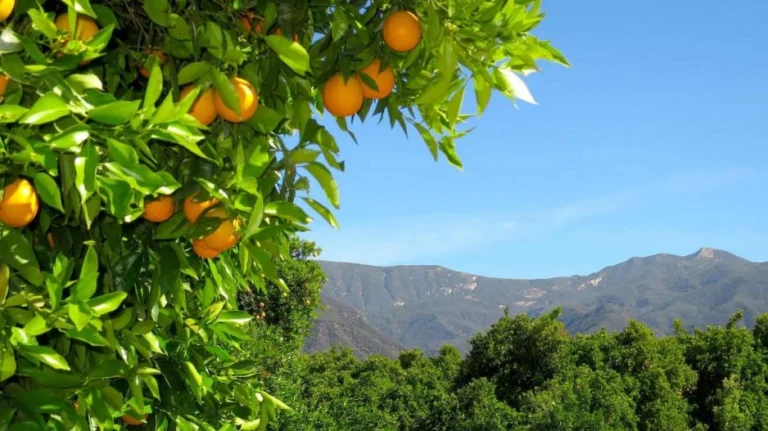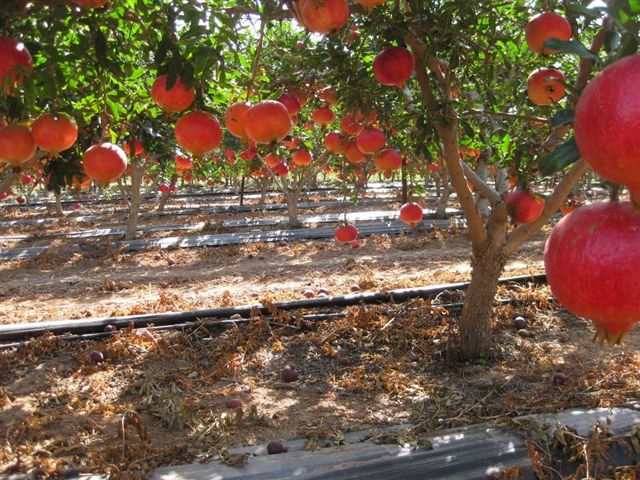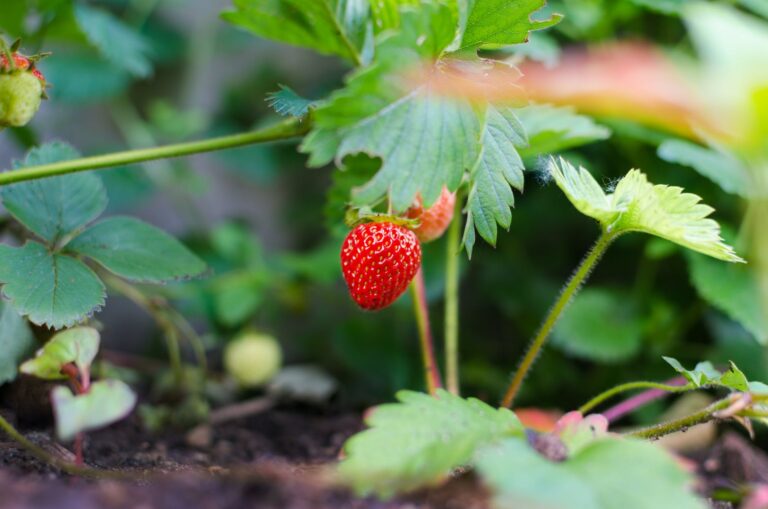Kenya’s Grape Potential: Climate, Varieties, and Growth Challenges.
Kenya is a beautiful country located in East Africa. It borders Tanzania to the south, Uganda to the west, South Sudan to the northwest, Ethiopia to the north, and Somalia to the east. The country has an incredibly diverse landscape, with everything from arid deserts and savannah plains, to lush forests and snow-capped mountains.
But what about its climate? Kenya has a tropical climate that is largely influenced by both its proximity to the equator and its varied topography.
Generally speaking, temperatures are high throughout most of the year due to constant solar radiation. However, these temperatures can vary dramatically depending on altitude or proximity to water sources.
So can grapes grow in such a place? It’s certainly a valid question.
Many people might be skeptical based on preconceived notions of what types of crops grow best in tropical climates. But before we answer that question directly, let’s take a closer look at the ideal conditions for grape growing — it will help us better understand if it’s possible here or not!
Climate Conditions for Grape Growing in Kenya
“Can grapes grow in Kenya?” is a question that comes to mind when one thinks about the country’s hot and humid climate. Although not known for its wine production, Kenya’s climate can actually support grape growing under certain conditions.
Description of ideal grape growing conditions (temperature, rainfall, sunlight)
Grapes thrive in warm and dry climates with moderate rainfall. Typically, grape vines require temperatures around 15-20°C during winter and 25-30°C during summer.
In addition, they require at least 7 hours of sunlight a day to produce high-quality fruit. Regarding rainfall, grapevines do not tolerate excessive moisture but cannot survive long drought periods either.
Thus, the ideal climate for grape cultivation is an area with an average annual rainfall of 500-800mm per year. This allows the vines to grow deep roots that help them withstand extended periods of drought while still providing enough moisture to sustain healthy growth.
Comparison of Kenya’s climate to ideal conditions
In comparison to the ideal climate for grapes, Kenya’s weather patterns are varied across its different regions. The country lies on the equator and experiences a tropical climate that is hot and humid all year round. The coastal region receives high amounts of rainfall while northern parts of Kenya are arid or semi-arid.
However, there are certain areas within the country that experience favorable climatic conditions for grape production. For instance, Kericho County has a high altitude which provides cooler temperatures than other regions in the country hence making it suitable for wine production.
The bottom line is Kenyan farmers need to identify areas with favorable climatic factors like temperature range and rainfall patterns for grape production. If done properly, the country has the potential to produce high-quality grapes that can be used to make world-class wines.
Grape Varieties Grown in Kenya
A Variety of Grapes
Grapes are one of the oldest cultivated fruits in the world, with a wide range of varieties. The Kenyan grape industry has flourished over the years, and we’ve seen farmers grow a variety of grapes. One popular grape variety grown in Kenya is the Thompson Seedless grape.
Known for being light green in color, these grapes are small to medium-sized and seedless. They are also sweet and juicy, making them perfect for snacking or wine production.
Crimson Seedless Grapes
Another popular grape variety grown in Kenya is the Crimson Seedless grape. These grapes are medium to large-sized and consist of firm flesh with a crispy texture.
They’re red or dark purple in color and are seedless as well. The Crimson Seedless possesses rich flavors that make it an ideal table grape for consumption as well as juice production.
Comparison to Popular Grape Varieties Around the World
While most people associate grapes with European countries like Italy or Spain, African countries like Kenya have been successful at cultivating their own unique varieties too. For instance, Kenyan Thompson Seedless grapes bear some similarities to the widely consumed California-grown version but have subtle differences that set them apart.
Similarly, comparing Crimson Seedless grapes from Kenya to those grown on other continents reveals differences not only based on region but also environmental factors such as climate and soil composition which contribute to distinctive flavor profiles, sizes or colors even within supposedly identical cultivars. Overall, despite its relatively new presence among world producers of quality grapes, Kenya’s thriving domestic industry has shown great potential for producing varieties that can compete globally while appealing more directly to local tastes – a true win-win situation!
Challenges Faced by Grape Growers in Kenya
Pests
One of the most significant challenges grape growers face in Kenya is pest infestations. For instance, the African bollworm, leafhoppers, and red spider mites are common pests that can cause significant damage to crops.
These pests can result in yield losses and decreased quality of grapes. To address these issues, farmers need to adopt integrated pest management strategies that combine biological control methods such as beneficial insects with chemical treatments.
Diseases
Diseases are another challenge that grape growers face in Kenya. Grapevine diseases such as powdery mildew and downy mildew can be devastating to crops if left untreated. Other diseases include Pierce’s disease, crown gall disease, and black rot disease.
Farmers need to practice proper sanitation measures such as removing infected plants and pruning infected tissue regularly. Additionally, they need access to effective fungicides that will protect their crops from various diseases.
Access to Technology
Limited access to technology is yet another challenge facing grape growers in Kenya. Access to equipment like drip irrigation systems or trellising materials is often limited due to financial constraints or lack of availability in local markets. Without these resources, it’s tough for farmers to implement efficient irrigation or optimize crop yields through proper plant training techniques like trellising or pruning.
Solutions
To overcome these challenges, there are various solutions available for grape growers in Kenya. Firstly, farmers should invest more time into researching specific pests and diseases commonly found within their region so they can better prepare themselves against potential problems before they occur.
Secondly, farmers should work towards adopting sustainable farming practices like integrated pest management (IPM) techniques that minimize chemical use while maximizing yields. Kenyan grape growers must embrace emerging technologies like precision agriculture to optimize crop yields and improve resource management.
For example, using remote sensing technologies to monitor crop conditions can help farmers detect potential pest or disease outbreaks early on and respond accordingly. Overall, while grape growing in Kenya is not without its challenges, with the adoption of sustainable farming practices and the use of emerging technologies, it’s possible for farmers to overcome these difficulties and cultivate a thriving grape industry in Kenya.
The Future of Grape Growing in Kenya
Potential for Growth and Expansion of the Kenyan Grape Industry
As we have seen, grapes can indeed grow in Kenya despite the challenges that come with the country’s climate. In fact, there is a huge potential for growth and expansion of the Kenyan grape industry. With more research, investment in better farming practices, and more education on grape cultivation, Kenya could become a major player in the global grape market.
Kenya’s location also makes it an ideal hub for exporting grapes to other African countries. This could create jobs and boost economic growth not just in Kenya but across the region.
Discussion on Economic Benefits and Opportunities for Local Farmers and Businesses
The growth of a thriving grape industry in Kenya would have numerous economic benefits for local farmers and businesses. For one, it would create jobs both on farms and within related industries such as transportation, packaging, marketing, and retail.
It could also increase demand for local goods such as machinery or farming equipment. Furthermore, exporting Kenyan grapes to other countries would bring money into the country’s economy.
This would provide business opportunities for local entrepreneurs who could develop new products or services that support or supplement grape growing. Overall, successful grape cultivation could be a win-win situation both for farmers looking to increase their earning potential as well as businesses seeking new opportunities in an emerging market.
Conclusion
Recap on the feasibility of growing grapes in Kenya
The answer to our question is a resounding yes – grapes can be grown in Kenya. Although the climate conditions are not ideal, there are several grape varieties that have been successfully grown in various regions of Kenya. With the right techniques and strategies, it is possible for Kenyan farmers to cultivate high-quality grapes that meet international standards.
Final thoughts on the potential impact on the Kenyan economy and agriculture industry
The potential impact of grape farming on Kenya’s economy and agriculture industry cannot be overstated. Not only does it offer an opportunity for farmers to diversify their crops and increase their income, but it also provides a new source of export revenue for the country as a whole.
Furthermore, successful grape farming in Kenya has the potential to inspire innovation and growth across other agricultural sectors. By implementing modern technologies and best practices in grape cultivation, Kenyan farmers may be able to improve their yields and overall productivity.
Overall, while there may be challenges involved with growing grapes in Kenya, the rewards are well worth it. With commitment, perseverance, and collaboration among stakeholders in both public and private sectors, we believe that Kenyan grape farming has a bright future ahead.





![Profitable watermelon farming in Kenya [Download Checklist]](https://harvestseason.co.ke/wp-content/uploads/2022/08/watermelon-1808136_1280-768x576.jpg)

